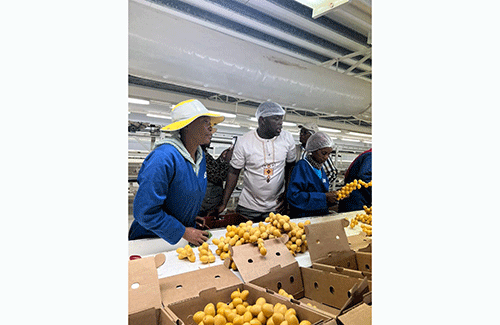Despite NamWater releasing 400 cubic metres of water per second last weekend from the Naute Dam outside Keetmanshoop, catchment areas further down south has not been affected yet.
Simon Akwenye, manager at the Naute Irrigation Project outside Keetmanshoop, said they did not experience any negative effects yet due to the recent, partial desludging of the dam after a strong inflow of water from heavy rains received in the area.
“All activities like harvesting and nursing plantations are safe for now, but if it in future becomes necessary to open more sludge gates, releasing massive amounts of water, it can be catastrophic for the irrigation project,’’ he explained.
Akwenye fears what would happen if last year’s inflow was repeated.
Once these water masses reach downward catchment areas like has been the case with the last rainy season, it will destroy everything in its way.
“Water supply to the fields and farms being constantly interrupted as well as damage to water infrastructure are some of the worst consequences we can except if last year’s history repeats itself,’’ the manager said.
During a previous interview with Jaffeth Xoagub, manager at Ai Ais resort, situated within the catchment area of the Fish River, said the establishment is also at risk of suffering infrastructural damages when the river is flooding.
“If the Naute Dam, feeding the Fish River with water, gets filled up beyond capacity during rains, these water masses (floods) will then normally reach up to Ai Ais, which can have disastrous effects – not only for the resort but the tourism industry as a whole,” he explained.
Xoagub added that infrastructure, like the braai areas, swimming pool and other buildings, were washed away with the previous floods whilst they then have to move visitors residing at the lower-lying campsites to higher grounds.
“As a result, this led to a loss of income and high financial costs to repair the infrastructure, he said.
The manager, however, noted the tourist facility is normally only affected every 10 years when heavy flooding usually occurred in these areas.
Xoagub concluded NamWater normally alerts them if the need arises to fully open the Naute Dam sluices to implement disaster preparedness programmes timeously.
– sklukowski@nepc.com.na


